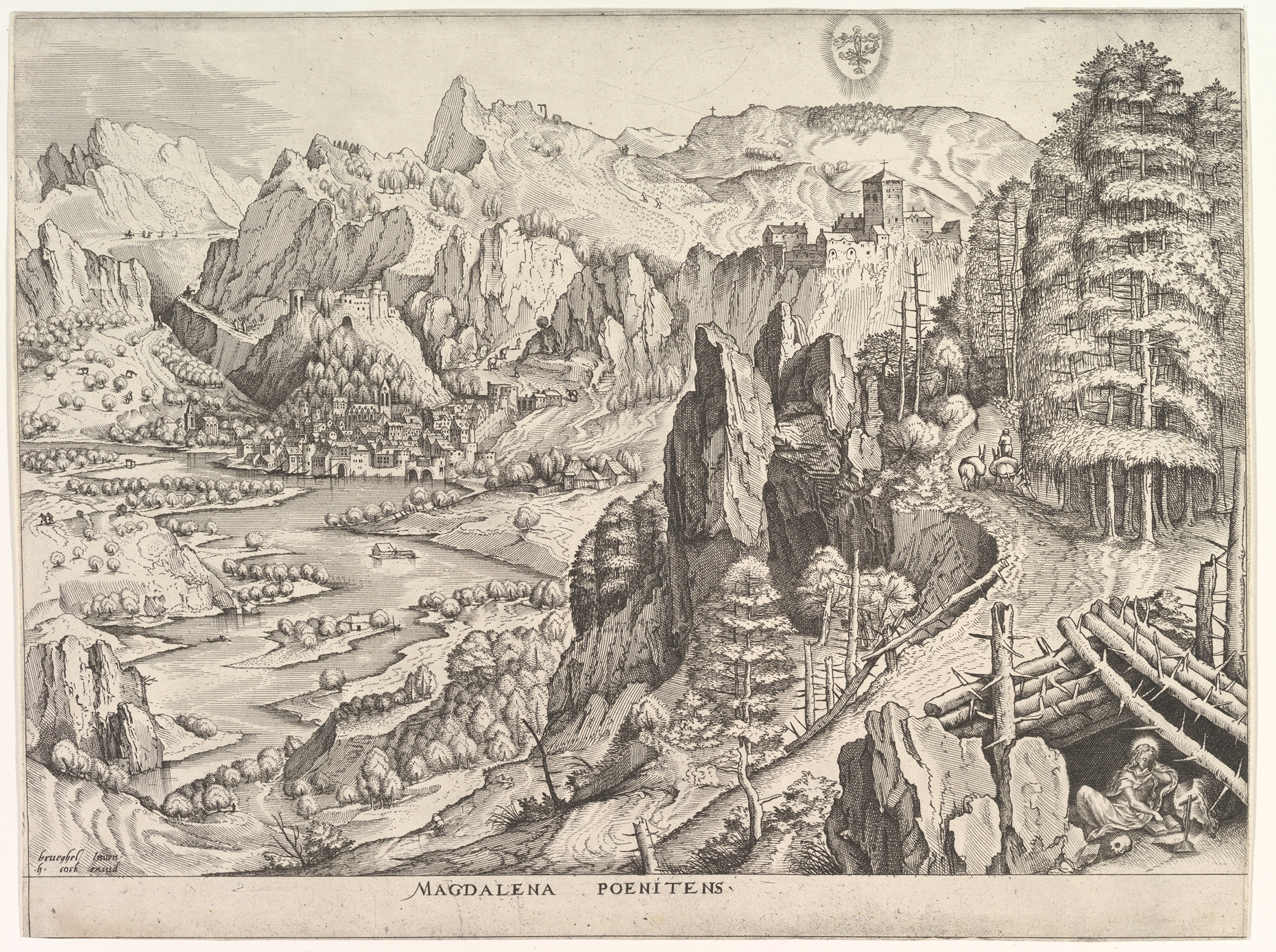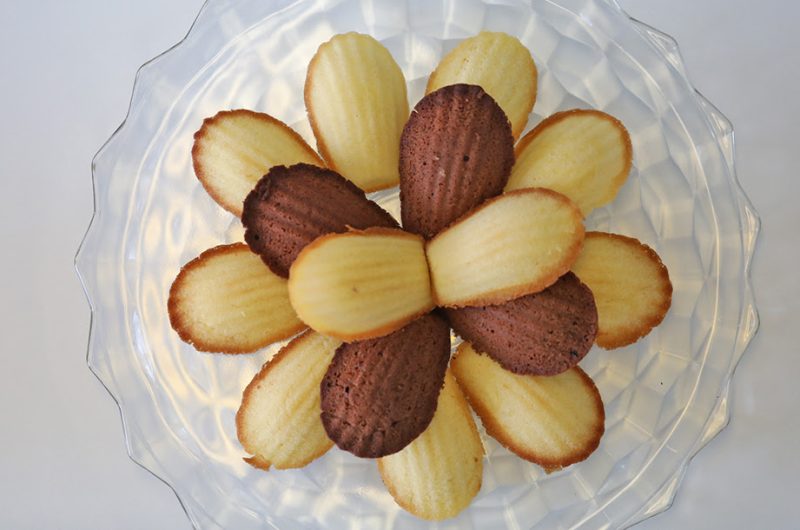
ABOUT THE ART
Johannes van Doetecum I, Lucas van Doetecum, and Pieter Bruegel the Elder. The Penitent Magdalene (Magdalena Poenitens) from The Large Landscapes. Ca. 1555–56. Etching. Sheet: 12 11/16 x 16 7/8 in. (32.3 x 42.8 cm). Harris Brisbane Dick Fund, 1926. Accession Number: 26.72.14. New York. The Metropolitan Museum of Art.
Pieter Bruegel the Elder’s design was used for this image, which depicts Mary Magdalene as a small figure in the foreground. She is shown reclining under a lean-to of logs and is shielded from the grand alpine valley and mountain scape behind her. In the sky above her, an aureole of light surrounds Mary as she is taken to heaven by angels. This print is part of a set of twelve known as the Large Landscapes, which were created after Bruegel’s return from Italy around 1554. The series reflects the dramatic mountain vistas that Bruegel saw during his travels through the Alps. The prints were executed primarily in etched lines and were published by Hieronymus Cock through his Antwerp shop, At the Four Winds. Although unsigned, they were widely circulated and celebrated, allowing a large audience to appreciate Bruegel’s naturalistic and broad-eyed conception of landscape.
Feast Day of Mary Magdalene – July 22nd
It is hard to overstate the importance of Mary Magdalene. She played a central role in the Gospels as a close friend of Jesus. Luke makes it clear that she was among the most important of Jesus’ female disciples. Scholars suspect that she was from a wealthy family and supported Jesus’ ministry financially. Much of the work of the early church was financed by women.
Mary, however, is in a league of her own. She was there at the crucifixion when the male disciples were gone, and she was there with the other women on Easter morning to witness the empty tomb. Mary then became the first preacher to proclaim the Easter message, calling the other disciples to Easter faith. This is why the church has been so bold to call her “the Apostle to the Apostles.”
Mary Magdalene is an example of the importance of women in the life of Jesus and the early church. This feast day is a great day to celebrate all the women, clergy or lay, who have helped you in your faith journey.
We are making madeleines, which is a French sponge cake baked in a special scallop mold. While probably named for a different Magdalene, it seems especially fitting because the French have always had a fondness for Mary, where it is believed that her relics are interred.

Madeleines
Madeleines are delicate, small, shell-shaped French cakes that are a traditional teatime treat. The cake is known for its distinctive shape and lightly crisp exterior. The batter is typically piped into the distinctive shell-shaped molds, resulting in a dainty, elegant dessert.
Keep the screen of your device on
Ingredients
1 cup 1 cake flour
1/4 teaspoon 1/4 salt
2 large 2 eggs plus 1 yolk
1/2 cup 1/2 sugar
1 tablespoon 1 vanilla extract
10 tablespoons 10 unsalted butter, melted and cooled
Directions
- Preheat oven to 375°F. Grease madeleine mold cookie pan.
- Whisk 1 cup cake flour and 1/4 teaspoon salt together in a small bowl
- Using a stand mixer fitted with paddle attachment, beat 2 large eggs plus 1 yolk on medium-high until frothy, 3 – 5 minutes. Add 1/2 cup sugar and 1 tablespoon vanilla extract and continue beating another 3 – 5 minutes or until very thick.
- Gently fold in the flour mixture followed by the butter.
- Spoon the batter into the prepared cookie mold pan, carefully filling each mold to the rim.
- Bake until the madeleines are golden brown, about 10 minutes.
- Let cookies cool for 10 minutes in the mold before removing and transferring to a wire cooling rack. Let madeleines completely cool before serving.
Notes
- For Chocolate Flavored Madeleines: Substitute 1/4 cup cocoa for 1/4 cup flour and add 2 teaspoons instant espresso powder to flour mixture in step 2.